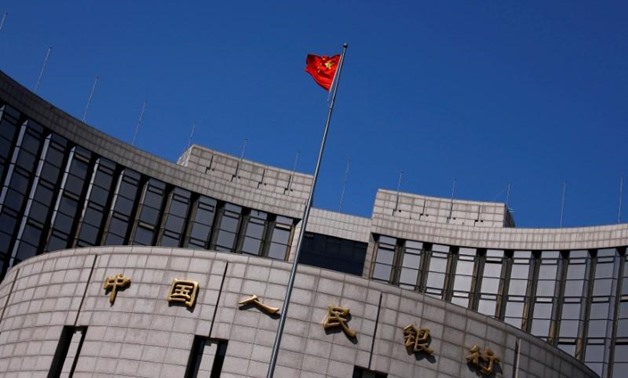
A Chinese national flag flutters outside the headquarters of the People's Bank of China, the Chinese central bank, in Beijing, China April 3, 2014.
Petar Kujundzic/File Photo
SHANGHAI - 18 August 2017: A week after China's central bank finally offered some explanation of the mysterious new 'X'-factor it has added to its daily yuan reference rate, traders and analysts say they are none the wiser over how to make sense of it.
The People's Bank of China (PBOC) added what it described as a "counter-cyclical factor" to its secret recipe for the yuan's mid-point calculations from late May. The change was widely seen as a move to tamp down on speculation.
The PBOC said the change would make the exchange rate regime more transparent, more market-oriented and rule-based, but months later outsiders say their ability to forecast the currency's moves has only diminished.
The yuan fell by around 6.5 percent against the surging dollar last year, but it has risen 4 percent this year - mostly since the introduction of the X-factor.
"Predicting the midpoint has become harder," said Tommy Xie, an economist at OCBC Bank in Singapore. Xie said his forecasting models have been less accurate in the past three months, and he was "puzzled."
The old yuan formula took into account the previous day's official local closing price against the dollar and changes to the yuan's value against three baskets of other currencies. Traders and economists were able to approximate those baskets and calculate with some accuracy where the midpoint would be.
After a long silence, the PBOC tried to elaborate on the methodology change in its quarterly monetary policy report issued last Friday.
The report said the 14 official banks that the PBOC gathers daily forecast contributions from in fact could each independently create their own counter-cyclical coefficient "based on macroeconomic fundamentals and forex market changes".
Effectively, instead of one murky variable, there are now potentially 14. The report offered no explanation, nor did it say how the central bank weighs the contributions in determining the yuan's midpoint.
Market participants were not impressed.
A Shanghai-based trader at a mid-sized Chinese bank said renewed opacity from the new fixing mechanism was "a throwback".
"'Mother Central Bank' has gained more control over the fixing. Put another way: she still has the final say," the trader said.
Another trader at a mid-sized Chinese bank in Shanghai said the "counter-cyclical factor" acted more as tool for the authorities to telegraph policy intention to the market.
"In terms of building a more transparent foreign exchange market as a long-term goal, it may not be a good tool. It sacrifices some transparency, and the factor has partly pushed the market-based reform backwards," the second trader said.
Natixis bank said in a note on Friday that the X-factor "basically helps the PBOC regain further control on the RMB fixing... since the PBOC is the only actor to have full control over each of the reporting banks' own midpoint estimations".
If there is a silver lining, it may be that the "counter-cyclical factor" has diluted the often self-reinforcing expectations engendered by the old, more predictable model.
"The correlations between the yuan's basket index and the dollar index was smashed," Xie said.
The PBOC said the new mechanism better reflects economic fundamentals.
"Adding the counter-cyclical factor does not change the trend and direction of foreign exchange supply and demand, it only appropriately filters out the 'herd effect', but not operating against the market," according to the report.
Economists and analysts said rather than simply reversing the yuan's course from one direction to the opposite, the new factor has smashed consensus that the currency was on a one-way depreciation ride.
The resulting bounce in the yuan, along with tighter government curbs, has helped reduce pressure from capital outflows and staunched a rapid drain in the country's foreign exchange reserves.
"We expect the RMB's exchange rate will experience more two-way fluctuations than one-way appreciation going forward," said economists at Citi.


Comments
Leave a Comment